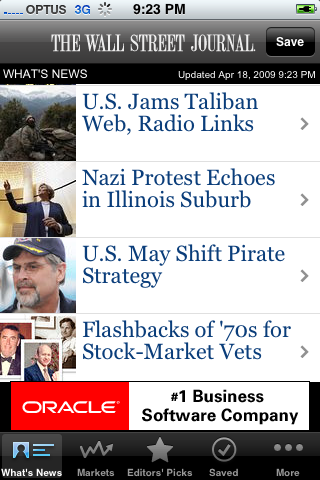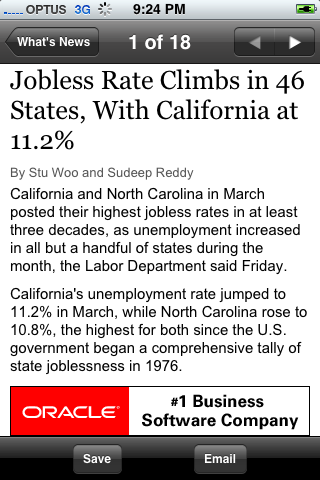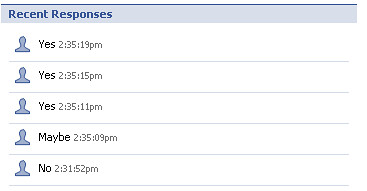Today, the Wall Street Journal published an article by a fund manager who suggested the Internet is now dead in terms of high growth. While I can respect the argument from the financial point of view (although he’s still wrong), it also shows how widespread and unsuspecting even the educated are for the transformation the Internet is preparing us. Yes, ladies and gentlemen – we ain’t seen nothing yet.
But I won’t get into the trends right now that are banging around my head, making me willing to change careers, country and life to position myself for the future opportunities. Let’s instead start with his core thesis:
The days of infinite margins, 1,000% productivity gains, and growth of market throughout the universe are long over. Internet companies now should be treated, at best, like utility companies that get bought at about 10 times earnings and sold at 13 times earnings. Even then, I’m not sure I would give the Internet sector the same respect as the monopoly-protected utility sector.
I am glad that was said, because this is more of a world-wide problem we have, that has lead us into the Global Financial Crisis (GFC). The ridiculous false economy generated over decades of speculative growth – where fundamental asset values were supported by unreal cash – is something we need to stop. The best thing the GFC has taught us, is that valuations need to be supported by independent cash flows with markets not manipulated to inflate their true value. And I can’t wait to see the technology sector (who along with their partners in crime in banking and property) use some basic accounting skills, and come to the rude awakening that, in the real world, that’s how things roll.
Where he is wrong however, is in the innovation that is creating new ways of generating revenue. More importantly, what we are seeing is a stabilisation in technologies invented half a century ago. The Internet and hypertext (the web is an implementation of a hyptertext system) have all been in development for 50 years – and it’s only *now* that we are coming to grips with the change. So to say this is a fad that’s now over, is really ignoring the longer term trends occurring.
As identified in the article, the biotech market will be massive, but I was told by the head of the PwC Technology park Bo Parker in March 2009 that it’s only just resembling Information Technology in the 1970s. However, when in comes to information, things are ramping up for a lot more as the industry has had a lot more time to evolve.
Where do I see things going? Oh man, let’s get a beer and talk about it. Data portability, Semantic Web, VRM, Project Natal, the sixth sense, augmented reality – try that to get your imagination started. I call it the age of ubiquity: ubiqitous connectivity, ubiqitous computing, ubiqitous information – where we have those separate things accessible anywhere and everywhere and when combined will change our lives. Information and communications, after all, are a fundamental aspect of being human that underlie everything we do – and so its impact will be more broadly applicable, obvious, and transformative.
Where’s the money in that? Are you kidding me?! The question is not how many dollars these changes can generate, but how many new industries will they spawn. We seriously don’t know what’s about to hit us in the next two decades for information technology, and clearly, neither do the Fund Managers.




